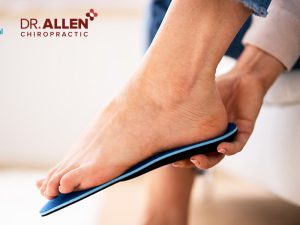Ankylosing spondylosis is a condition often misunderstood due to its close terminology with other spine diseases like ankylosing spondylitis. This blog post aims to shed light on ankylosing spondylosis, its symptoms, treatment options, and how it differs from ankylosing spondylitis.
Ankylosing Spondylosis
Ankylosing spondylosis, also known as spinal osteoarthritis, is a degenerative condition affecting the vertebrae, the intervertebral discs, and the facet joints of the spine. This degeneration can cause bone spurs (osteophytes) to form, leading to stiffness and pain in the spine.
It’s important to note that the term “ankylosing spondylosis” is often used incorrectly, and there may be some confusion regarding its use. ‘Ankylosing’ refers to the fusing of the spinal joints, which is a characteristic of ankylosing spondylitis, not spondylosis.
Ankylosing Spondylosis Symptoms
The symptoms of ankylosing spondylosis can range from mild to severe, depending on the extent of the degeneration and the area of the spine affected. Common symptoms include:
- Chronic pain in the neck or back
- Stiffness, especially in the morning
- Reduced flexibility of the spine
- In severe cases, nerve compression may occur, leading to numbness, weakness, or tingling in the limbs
Ankylosing Spondylosis Treatment
Treatment for ankylosing spondylosis is usually aimed at managing the symptoms and preventing further degeneration. It can include:
- Pain relievers and anti-inflammatory drugs: These can help manage pain and reduce inflammation.
- Physical therapy: Specific exercises can help improve flexibility and strength.
- Lifestyle modifications: Maintaining a healthy weight and adopting good posture can help relieve stress on the spine.
- In severe cases, surgical intervention may be considered to relieve nerve compression or correct spinal deformities.
Spondylosis vs Ankylosing Spondylitis
While both conditions affect the spine and can cause similar symptoms, they have distinct differences:
Spondylosis, also known as spinal osteoarthritis, is a degenerative condition that usually occurs with age. It primarily affects the intervertebral discs and facet joints, leading to the formation of bone spurs and stiffening of the spine.
Ankylosing spondylitis, on the other hand, is a type of inflammatory arthritis that primarily affects the spine, especially the sacroiliac joints. It can cause inflammation and severe pain, and over time may lead to the fusion of the spine (ankylosis). Unlike spondylosis, ankylosing spondylitis usually begins in early adulthood and has a genetic predisposition.
In conclusion, while ankylosing spondylosis (spinal osteoarthritis) can cause significant discomfort, the condition is manageable with the right treatments and lifestyle modifications. If you are experiencing persistent back or neck pain, consult a healthcare provider to get an accurate diagnosis and tailored treatment plan. Your proactive engagement in managing your spinal health can significantly impact your quality of life.











